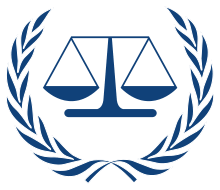Universal Declaration of Human Rights
The Universal Declaration of Human Rights (UDHR) is a document adopted by the United Nations General Assembly establishing a set of principles for the rights of individuals. The doctrine was accepted by the General Assembly at its third session on 10 December 1948 as Resolution 217 at the Palais de Chaillot in Paris, France. Of the 58 members of the United Nations at the time, 48 voted in favour, none against, eight abstained, and two did not vote.[1]
| Universal Declaration of Human Rights | |
|---|---|
 Eleanor Roosevelt with the English language version of the Universal Declaration of Human Rights. | |
| Created | 1948 |
| Ratified | 10 December 1948 |
| Location | Palais de Chaillot, Paris |
| Author(s) | Draft Committee[lower-alpha 1] |
| Purpose | Human rights |
| Rights |
|---|
 |
| Theoretical distinctions |
| Human rights |
| Rights by beneficiary |
| Other groups of rights |
| Wikisource has original text related to this article: |
The Declaration consists of 30 articles detailing an individual's rights which, although not legally binding in themselves, have been elaborated in subsequent international treaties, economic transfers, regional human rights instruments, national constitutions, and other laws. The Declaration was the first step in the process of formulating the International Bill of Human Rights, which was completed in 1966, and came into force in 1976, after a sufficient number of countries had ratified them.
Some legal scholars have argued that because countries have constantly invoked the Declaration for more than 50 years, it has become binding as a part of customary international law.[2][3] However, in the United States, the Supreme Court in Sosa v. Alvarez-Machain (2004), concluded that the Declaration "does not of its own force impose obligations as a matter of international law."[4] Courts of other countries have also concluded that the Declaration is not in and of itself part of domestic law.[5]
Structure and content
The underlying structure of the Universal Declaration was introduced in its second draft, which was prepared by René Cassin. Cassin worked from a first draft, which was prepared by John Peters Humphrey. The structure was influenced by the Code Napoléon, including a preamble and introductory general principles.[6] Cassin compared the Declaration to the portico of a Greek temple, with a foundation, steps, four columns, and a pediment.
The Declaration consists of a preamble and thirty articles:
- The preamble sets out the historical and social causes that led to the necessity of drafting the Declaration.
- Articles 1–2 established the basic concepts of dignity, liberty, and equality.
- Articles 3–5 established other individual rights, such as the right to life and the prohibition of slavery and torture.
- Articles 6–11 refer to the fundamental legality of human rights with specific remedies cited for their defence when violated.
- Articles 12–17 established the rights of the individual towards the community (including such things as freedom of movement).
- Articles 18–21 sanctioned the so-called "constitutional liberties", and with spiritual, public, and political freedoms, such as freedom of thought, opinion, religion and conscience, word, and peaceful association of the individual.
- Articles 22–27 sanctioned an individual's economic, social and cultural rights, including healthcare. Article 25 states: "Everyone has the right to a standard of living adequate for the health and well-being of himself and of his family, including food, clothing, housing and medical care and necessary social services." It also makes additional accommodations for security in case of physical debilitation or disability, and makes special mention of care given to those in motherhood or childhood.[7]
- Articles 28–30 established the general ways of using these rights, the areas in which these rights of the individual can not be applied, and that they can not be overcome against the individual.
These articles are concerned with the duty of the individual to society and the prohibition of the use of rights in contravention of the purposes of the United Nations Organisation.[8]
History
Background
During World War II, the Allies adopted the Four Freedoms—freedom of speech, freedom of religion, freedom from fear, and freedom from want—as their basic war aims.[9][10] The United Nations Charter "reaffirmed faith in fundamental human rights, and dignity and worth of the human person" and committed all member states to promote "universal respect for, and observance of, human rights and fundamental freedoms for all without distinction as to race, sex, language, or religion".[11]
When the atrocities committed by Nazi Germany became fully apparent after World War II, the consensus within the world community was that the United Nations Charter did not sufficiently define the rights to which it referred.[12][13] A universal declaration that specified the rights of individuals was necessary to give effect to the Charter's provisions on human rights.[14]
Creation and drafting
In June 1946, the UN Economic and Social Council established the Commission on Human Rights, comprising 18 members from various nationalities and political backgrounds. The Commission, a standing body of the United Nations, was constituted to undertake the work of preparing what was initially conceived as an International Bill of Rights.[15]
The Commission established a special Universal Declaration of Human Rights Drafting Committee, chaired by Eleanor Roosevelt, to write the articles of the Declaration. The Committee met in two sessions over the course of two years.
Canadian John Peters Humphrey, Director of the Division of Human Rights within the United Nations Secretariat, was called upon by the United Nations Secretary-General to work on the project and became the Declaration's principal drafter.[16] At the time, Humphrey was newly appointed as Director of the Division of Human Rights within the United Nations Secretariat.[17]
Other well-known members of the drafting committee included René Cassin of France, Charles Malik of Lebanon, and P. C. Chang of the Republic of China.[18] Humphrey provided the initial draft that became the working text of the Commission.
Hansa Mehta of India suggested adding "all human beings are created equal" instead of "all men are created equal" in the declaration.
According to Allan Carlson, the Declaration's pro-family phrases were the result of the Christian Democratic movement's influence on Cassin and Malik.[19]
Once the Committee finished its work in May 1948, the draft was further discussed by the Commission on Human Rights, the Economic and Social Council, the Third Committee of the General Assembly before being put to vote in December 1948. During these discussions many amendments and propositions were made by UN Member States.[20]
British representatives were extremely frustrated that the proposal had moral but no legal obligation.[21] (It was not until 1976 that the International Covenant on Civil and Political Rights came into force, giving a legal status to most of the Declaration.)
Adoption
The Universal Declaration was adopted by the General Assembly as Resolution 217 on 10 December 1948 in Palais de Chaillot, Paris, as the third United Nations General Assembly was held there.[22] Of the then 58 members[23] of the United Nations, 48 voted in favour, none against, eight abstained[24][25] and Honduras and Yemen failed to vote or abstain.[26]
The meeting record[27] provides firsthand insight into the debate. South Africa's position can be seen as an attempt to protect its system of apartheid, which clearly violated several articles in the Declaration.[24] The Saudi Arabian delegation's abstention was prompted primarily by two of the Declaration's articles: Article 18, which states that everyone has the right "to change his religion or belief"; and Article 16, on equal marriage rights.[24] The six communist countries abstentions centred around the view that the Declaration did not go far enough in condemning fascism and Nazism.[28] Eleanor Roosevelt attributed the abstention of Soviet bloc countries to Article 13, which provided the right of citizens to leave their countries.[29]

Green countries: voted in favour;
Orange countries: abstained;
Black countries: failed to abstain or vote;
Grey countries: were not part of the UN at time of voting
The 48 countries that voted in favour of the Declaration are:[30]
.svg.png)

.svg.png)
.svg.png)
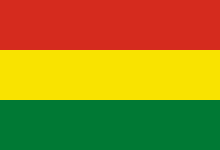
.svg.png)
.svg.png)
.svg.png)



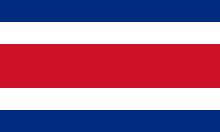
.svg.png)

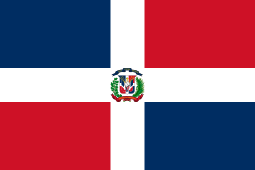
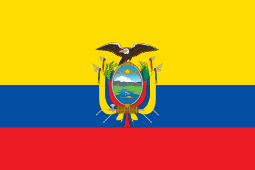
.svg.png)
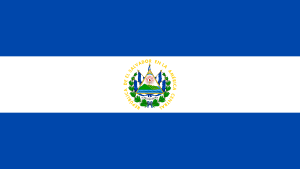
.svg.png)
.svg.png)
.svg.png)
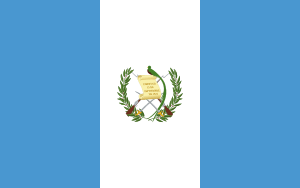
.svg.png)


.svg.png)
.svg.png)

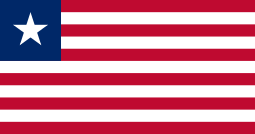

.svg.png)


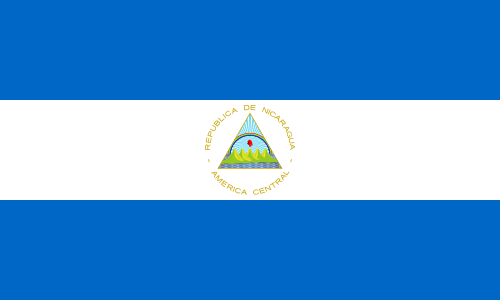



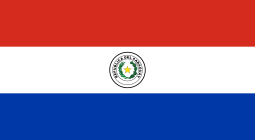

.svg.png)


.svg.png)


.svg.png)
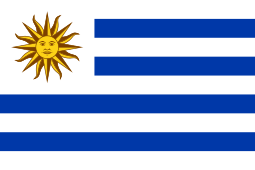
.svg.png)
- a. ^ Despite the central role played by the Canadian John Peters Humphrey, the Canadian Government at first abstained from voting on the Declaration's draft, but later voted in favour of the final draft in the General Assembly.[31]
Eight countries abstained:[30]
Two countries did not vote:
Other countries only gained sovereignty and joined the United Nations later, which explains the relatively small number of states entitled to the historical vote.[32]
International Human Rights Day
The Declaration of Human Rights Day is commemorated every year on December 10, the anniversary of the adoption of the Universal Declaration, and is known as Human Rights Day or International Human Rights Day. The commemoration is observed by individuals, community and religious groups, human rights organizations, parliaments, governments, and the United Nations. Decadal commemorations are often accompanied by campaigns to promote awareness of the Declaration and human rights. 2008 marked the 60th anniversary of the Declaration, and was accompanied by year-long activities around the theme "Dignity and justice for all of us".[33]
Significance and legal effect
Significance
In 1948, the UN Resolution A/RES/217(III)[A] adopted the Declaration on a bilingual document in English and French, and official translations in Chinese, Russian and Spanish.[34] In 2009, the Guinness Book of Records described the Declaration as the world's "Most Translated Document" (370 different languages and dialects).[35][36] The Unicode Consortium stores 431[37] of the 503[38] official translations available at the OHCHR (as of June 2017).
In its preamble, governments commit themselves and their people to progressive measures that secure the universal and effective recognition and observance of the human rights set out in the Declaration. Eleanor Roosevelt supported the adoption of the Declaration as a declaration rather than as a treaty because she believed that it would have the same kind of influence on global society as the United States Declaration of Independence had within the United States.[39] Even though it is not legally binding, the Declaration has been adopted in or has influenced most national constitutions since 1948. It has also served as the foundation for a growing number of national laws, international laws, and treaties, as well as for a growing number of regional, sub national, and national institutions protecting and promoting human rights.
For the first time in international law, the term "the rule of law" was used in the preamble of the Declaration. The third paragraph of the preamble of the Declaration reads as follows: "Whereas it is essential, if man is not to be compelled to have recourse, as a last resort, to rebellion against tyranny and oppression, that human rights should be protected by the rule of law."[40]
Legal effect
While not a treaty itself, the Declaration was explicitly adopted for the purpose of defining the meaning of the words "fundamental freedoms" and "human rights" appearing in the United Nations Charter, which is binding on all member states. For this reason, the Universal Declaration of Human Rights is a fundamental constitutive document of the United Nations. In addition, many international lawyers[41][42][43][44][45] believe that the Declaration forms part of customary international law[46] and is a powerful tool in applying diplomatic and moral pressure to governments that violate any of its articles. The 1968 United Nations International Conference on Human Rights advised that the Declaration "constitutes an obligation for the members of the international community" to all persons. The Declaration has served as the foundation for two binding UN human rights covenants: the International Covenant on Civil and Political Rights and the International Covenant on Economic, Social and Cultural Rights. The principles of the Declaration are elaborated in international treaties such as the International Convention on the Elimination of All Forms of Racial Discrimination, the International Convention on the Elimination of Discrimination Against Women, the United Nations Convention on the Rights of the Child, the United Nations Convention Against Torture, and many more. The Declaration continues to be widely cited by governments, academics, advocates, and constitutional courts, and by individuals who appeal to its principles for the protection of their recognised human rights.
Reaction
Praise
The Universal Declaration has received praise from a number of notable people. The Lebanese philosopher and diplomat Charles Malik called it "an international document of the first order of importance",[47] while Eleanor Roosevelt—first chairwoman of the Commission on Human Rights (CHR) that drafted the Declaration—stated that it "may well become the international Magna Carta of all men everywhere."[48] In a speech on 5 October 1995, Pope John Paul II called the Declaration "one of the highest expressions of the human conscience of our time" but the Vatican never adopted the Declaration.[49] In a statement on 10 December 2003 on behalf of the European Union, Marcello Spatafora said that the Declaration "placed human rights at the centre of the framework of principles and obligations shaping relations within the international community."[50]
Criticism
Islamic countries
Turkey, a secular state with an overwhelmingly Muslim population, signed the Declaration in 1948.[51] However, the same year, Saudi Arabia abstained from the ratification vote on the Declaration, claiming that it violated Sharia law.[52] Pakistan—which had signed the declaration—disagreed and critiqued the Saudi position.[53] Pakistani minister Muhammad Zafarullah Khan strongly argued in favour of including freedom of religion.[54] In 1982, the Iranian representative to the United Nations, Said Rajaie-Khorassani, said that the Declaration was "a secular understanding of the Judeo-Christian tradition", which could not be implemented by Muslims without conflict with Sharia.[55] On 30 June 2000, members of the Organisation of the Islamic Conference (now the Organisation of Islamic Cooperation) officially resolved to support the Cairo Declaration on Human Rights in Islam,[56] an alternative document that says people have "freedom and right to a dignified life in accordance with the Islamic Shari'ah", without any discrimination on grounds of "race, colour, language, sex, religious belief, political affiliation, social status or other considerations".
Some Muslim diplomats would go on later to help draft other UN human rights treaties. For example, Iraqi diplomat Bedia Afnan's insistence on wording that recognized gender equality resulted in Article 3 within the ICCPR and ICESCR. Pakistani diplomat Shaista Suhrawardy Ikramullah also spoke in favour of recognizing women's rights.[54]
A number of scholars in different fields have expressed concerns with the Declaration's alleged Western bias. These include Irene Oh, Abdulaziz Sachedina, Riffat Hassan, and Faisal Kutty. Hassan has argued:
What needs to be pointed out to those who uphold the Universal Declaration of Human Rights to be the highest, or sole, model, of a charter of equality and liberty for all human beings, is that given the Western origin and orientation of this Declaration, the "universality" of the assumptions on which it is based is – at the very least – problematic and subject to questioning. Furthermore, the alleged incompatibility between the concept of human rights and religion in general, or particular religions such as Islam, needs to be examined in an unbiased way.[57]
Irene Oh argues that one solution is to approach the issue from the perspective of comparative (descriptive) ethics.[58]
Kutty writes: "A strong argument can be made that the current formulation of international human rights constitutes a cultural structure in which western society finds itself easily at home ... It is important to acknowledge and appreciate that other societies may have equally valid alternative conceptions of human rights."[59]
"The Right to Refuse to Kill"
Groups such as Amnesty International[60] and War Resisters International[61] have advocated for "The Right to Refuse to Kill" to be added to the Universal Declaration. War Resisters International has stated that the right to conscientious objection to military service is primarily derived from—but not yet explicit in—Article 18 of the UDHR: the right to freedom of thought, conscience, and religion.[61]
Steps have been taken within the United Nations to make this right more explicit, but—to date (2017)—those steps have been limited to less significant United Nations documents. Sean MacBride—Assistant Secretary-General of the United Nations and Nobel Peace Prize laureate—has said: "To the rights enshrined in the Universal Declaration of Human Rights one more might, with relevance, be added. It is 'The Right to Refuse to Kill'."[62]
American Anthropological Association
The American Anthropological Association criticized the UDHR while it was in its drafting process. The AAA warned that the document would be defining universal rights from a Western paradigm which would be unfair to countries outside of that scope. They further argued that the West's history of colonialism and evangelism made them a problematic moral representative for the rest of the world. They proposed three notes for consideration with underlying themes of cultural relativism:
- The individual realizes his personality through his culture, hence respect for individual differences entails a respect for cultural differences.
- Respect for differences between cultures is validated by the scientific fact that no technique of qualitatively evaluating cultures has been discovered.
- Standards and values are relative to the culture from which they derive so that any attempt to formulate postulates that grow out of the beliefs or moral codes of one culture must to that extent detract from the applicability of any Declaration of Human Rights to mankind as a whole.[63]
Bangkok Declaration
During the lead up to the World Conference on Human Rights held in 1993, ministers from Asian states adopted the Bangkok Declaration, reaffirming their governments' commitment to the principles of the United Nations Charter and the Universal Declaration of Human Rights. They stated their view of the interdependence and indivisibility of human rights and stressed the need for universality, objectivity, and non-selectivity of human rights. However, at the same time, they emphasised the principles of sovereignty and non-interference, calling for greater emphasis on economic, social, and cultural rights—in particular, the right to economic development by establishing international collaboration directives between the signatories. The Bangkok Declaration is considered to be a landmark expression of the Asian values perspective,[64] which offers an extended critique of human rights universalism.[65]
Organizations promoting the UDHR
International Federation for Human Rights
The International Federation for Human Rights (FIDH) is nonpartisan, nonsectarian, and independent of any government, and its core mandate is to promote respect for all the rights set out in the Universal Declaration of Human Rights, the International Covenant on Civil and Political Rights, and the International Covenant on Economic, Social and Cultural Rights.[66][67]
Amnesty International
In 1988, director Stephen R. Johnson and 41 international animators, musicians, and producers created a 20-minute video for Amnesty International to celebrate the 40th Anniversary of the Universal Declaration. The video's subject was the Declaration's 30 articles.[68]
Amnesty International celebrated Human Rights Day and the 60th anniversary of the Universal Declaration all over the world by organizing the "Fire Up!" event.[69]
Quaker United Nations Office and American Friends Service Committee
The Quaker United Nations Office and the American Friends Service Committee work on many human rights issues, including improving education on the Universal Declaration of Human Rights. They have developed a curriculum to help introduce High School students to the Universal Declaration of Human Rights.[70][71]
American Library Association
In 1997, the council of the American Library Association (ALA) endorsed Article 19 from the Universal Declaration of Human Rights.[72] Along with Article 19, Article 18 and 20 are also fundamentally tied to the ALA Universal Right to Free Expression and the Library Bill of Rights.[73] Censorship, the invasion of privacy, and interference of opinions are human rights violations according to the ALA.
In response to violations of human rights, the ALA asserts the following principles:
The American Library Association opposes any use of governmental prerogative that leads to intimidation of individuals that prevents them from exercising their rights to hold opinions without interference, and to seek, receive, and impart information and ideas. We urge libraries and librarians everywhere to resist such abuse of governmental power, and to support those against whom such governmental power has been employed.
The American Library Association condemns any governmental effort to involve libraries and librarians in restrictions on the right of any individual to hold opinions without interference, and to seek, receive, and impart information and ideas. Such restrictions, whether enforced by statutes or regulations, contractual stipulations, or voluntary agreements, pervert the function of the library and violate the professional responsibilities of librarians.
The American Library Association rejects censorship in any form. Any action that denies the inalienable human rights of individuals only damages the will to resist oppression, strengthens the hand of the oppressor, and undermines the cause of justice.
The American Library Association will not abrogate these principles. We believe that censorship corrupts the cause of justice, and contributes to the demise of freedom.[74]
Youth for Human Rights International
Youth for Human Rights International (YHRI) is a non-profit organization founded in 2001 by Mary Shuttleworth, an educator born and raised in apartheid South Africa, where she witnessed firsthand the effects of discrimination and the lack of basic human rights. The purpose of YHRI is to teach youth about human rights, specifically the United Nations Universal Declaration of Human Rights, and inspire them to become advocates for tolerance and peace. YHRI has now grown into a global movement, including hundreds of groups, clubs and chapters around the world.[75] However, the YHRI has been criticized as being a front group for the Church of Scientology, as the organization promotes Scientology founder L. Ron Hubbard's writings[76] and is mainly staffed and financed by Scientologists.[77]
See also
Human rights
Non-binding agreements
International human rights law
- Fourth Geneva Convention (1949)
- European Convention on Human Rights (1952)
- Convention Relating to the Status of Refugees (1951)
- Convention on the Elimination of All Forms of Racial Discrimination (1969)
- International Covenant on Civil and Political Rights (1976)
- International Covenant on Economic, Social and Cultural Rights (1976)
- Convention on the Elimination of All Forms of Discrimination Against Women (1981)
- Convention on the Rights of the Child (1990)
- Charter of Fundamental Rights of the European Union (2000)
- Convention on the Rights of Persons with Disabilities (2007)
Thinkers influencing the Declaration
Other
- Slavery in the United States
- Slavery in Russia
- Slavery in international law
- Slave Trade Acts
- Human rights in China (PRC)
- LGBT rights at the United Nations
- Command responsibility
- Moral universalism
- Declaration on Great Apes, an as-yet unsuccessful effort to extend some human rights to other great apes
- United Nations Prize in the Field of Human Rights
- "Consent of the governed"
- Racial equality proposal (1919)
- The Farewell Sermon (632 CE)
- Youth for Human Rights International
- List of literary works by number of translations
- Monica Ross
- Right to education
Notes
- Included John Peters Humphrey (Canada), René Cassin (France), P. C. Chang (Republic of China), Charles Malik (Lebanon), Hansa Mehta (India) and Eleanor Roosevelt (United States); see Creation and drafting section above.
Citations
- "A/RES/217(III)". UNBISNET. Retrieved 24 May 2015.
- Henry J Steiner and Philip Alston, International Human Rights in Context: Law, Politics, Morals, (2nd ed), Oxford University Press, Oxford, 2000.
- Hurst Hannum, The universal declaration of human rights in National and International Law, p.145
- Sosa v. Alvarez-Machain, 542 U.S. 692, 734 (2004).
- Posner, Eric (2014-12-04). "The case against human rights | Eric Posner". The Guardian. ISSN 0261-3077. Retrieved 2020-01-22.
- Glendon 2002, pp. 62–64.
- Universal Declaration of Human Rights, United Nations, 1948
- Glendon 2002, Chapter 10.
- "FDR, "The Four Freedoms," Speech Text |". Voicesofdemocracy.umd.edu. January 6, 1941. Retrieved April 25, 2018.
- Bodnar, John, The "Good War" in American Memory. (Maryland: Johns Hopkins University Press, 2010) 11
- "United Nations Charter, preamble and article 55". United Nations. Retrieved 2013-04-20.
- Cataclysm and World Response in Drafting and Adoption : The Universal Declaration of Human Rights, udhr.org.
- "UDHR50: Didn't Nazi tyranny end all hope for protecting human rights in the modern world?". Udhr.org. 1998-08-28. Archived from the original on 2012-05-25. Retrieved 2012-07-07.
- "UDHR – History of human rights". Universalrights.net. Retrieved 2012-07-07.
- Morsink 1999, p. 4
- Morsink 1999, p. 5
- Morsink 1999, p. 133
- The Declaration was drafted during the Chinese Civil War. P.C. Chang was appointed as a representative by the Republic of China, then the recognised government of China, but which was driven from mainland China and now administers only Taiwan and nearby islands (history.com).
- Carlson, Allan: Globalizing Family Values Archived 2012-05-25 at Archive.today, 12 January 2004.
- "Drafting of the Universal Declaration of Human Rights". Research Guides. United Nations. Dag Hammarskjöld Library. Retrieved 2015-04-17.
- Universal Declaration of Human Rights. Final authorized text. The British Library. September 1952. Retrieved 16 August 2015.
- "Palais de Chaillot. Chaillot museums". Paris Digest. 2018. Retrieved 2018-12-31.
- "Growth in United Nations membership, 1945–present". www.un.org. Retrieved 2018-02-01.
- CCNMTL. "default". Center for New Media Teaching and Learning (CCNMTL). Columbia University. Retrieved 2013-07-12.
- UNAC. "Questions and answers about the Universal Declaration of Human Rights". United Nations Association in Canada (UNAC). p. "Who are the signatories of the Declaration?". Archived from the original on 2012-09-12.
- Jost Müller-Neuhof (2008-12-10). "Menschenrechte: Die mächtigste Idee der Welt". Der Tagesspiegel (in German). Retrieved 2013-07-12.
- United Nations. "default". Retrieved 2017-08-30.
- Peter Danchin. "The Universal Declaration of Human Rights: Drafting History – 10. Plenary Session of the Third General Assembly Session". Retrieved 2015-02-25.
- Glendon 2002, pp. 169–70
- "Yearbook of the United Nations 1948–1949 p 535" (PDF). Archived from the original (PDF) on September 27, 2013. Retrieved 24 July 2014.
- Schabas, William (1998). "Canada and the Adoption of Universal Declaration of Human Rights" (PDF). McGill Law Journal. 43: 403.
- "OHCHR - Human Rights in the World". www.ohchr.org.
- "The Universal Declaration of Human Rights: 1948–2008". United Nations. Retrieved 15 February 2011.
- "A/RES/217(III)". UNBISNET. Retrieved 13 Jun 2017.
- "Most translated document".
- "Universal Declaration of Human Rights". United Nations Office of the High Commissioner for Human Rights.
- "UDHR in Unicode – Translations", Unicode, retrieved 8-6-2017
- "Search by Translation", UDHR Translation Project, United Nations Office of the High Commissioner for Human Rights, retrieved 13-8-2017.
- Timmons, Eric J. "Mspy and USA declaration". 4everY. SpySoft. Retrieved 26 December 2017.
- "Universal Declaration of Human Rights". www.un.org. Retrieved 2017-12-07.
- John Peters, Humphrey (23 May 1979). "The universal declaration of human rights, Its history, impact andjuridical character". In Bertrand G., Ramcharan (ed.). Human Rights: Thirty Years After the Universal Declaration : Commemorative Volume on the Occasion of the Thirtieth Anniversary of the Universal Declaration of Human Rights. The Hage: Nijhoff. p. 37. ISBN 90-247-2145-8.
- Sohn, Louis B. (1977). "The human rights law of the charter". Texas International Law Journal. 12: 133. ISSN 0163-7479. Retrieved 2018-03-21.
- Myres S., McDougal; Lasswell, Harold D.; Chen, Lung-chu (1969). "Human Rights and World Public Order: A Framework for Policy-Oriented Inquiry". Faculty Scholarship Series. Yale Law School. pp. 273–274, 325–327. Retrieved 2018-03-21.
- Anthony A. D'Amato (1987). International law: process and prospect. Transnational Publishers. pp. 123–147. ISBN 978-0-941320-35-1.
- Katharine G. Young, Freedom, Want and Economic and Social Rights: Frame and Law, 24 Md. J. Int’l L. 182 (2009) (Symposium on 60th Anniversary of the Universal Declaration of Human Rights)
- Office of the High Commissioner for Human Rights. "Digital record of the UDHR". United Nations.
- "Statement by Charles Malik as Representative of Lebanon to the Third Committee of the UN General Assembly on the Universal Declaration". 6 November 1948. Archived from the original on 28 September 2008.
- Michael E. Eidenmuller (1948-12-09). "Eleanor Roosevelt: Address to the United Nations General Assembly". Americanrhetoric.com. Retrieved 2012-07-07.
- "John Paul II, Address to the U.N., October 2, 1979 and October 5, 1995". Vatican.va. Retrieved 2012-07-07.
- "International human rights defenders honoured as general assembly marks fifty-fifth anniversary of universal declaration", United Nations: meetings coverage and press releases, 10 December 2003
- "Universal Declaration of Human Rights". Retrieved 2015-10-30.
- Nisrine Abiad (2008). Sharia, Muslim states and international human rights treaty obligations: a comparative study. BIICL. pp. 60–65. ISBN 978-1-905221-41-7.
- Price 1999, p. 163
- Hashemi, Nader and Emran Qureshi. "Human Rights." In The Oxford Encyclopedia of the Islamic World. Oxford Islamic Studies Online.
- Littman, D (February–March 1999). "Universal Human Rights and Human Rights in Islam". Midstream. Archived from the original on 2006-05-01.
- "Resolution No 60/27-P". Organisation of the Islamic Conference. 2000-06-27. Retrieved 2011-06-02.
- "Are Human Rights Compatible with Islam?". religiousconsultation.org. Retrieved 2012-11-12.
- "The Rights of God". Georgetown University Press, 2007.
- "Non-Western Societies Have Influenced Human Rights". in Jacqueline Langwith (ed.), Opposing Viewpoints: Human Rights, Gale/Greenhaven Press: Chicago, 2007.
- Out of the margins: the right to conscientious objection to military service in Europe: An announcement of Amnesty International's forthcoming campaign and briefing for the UN Commission on Human Rights, 31 March 1997. Amnesty International.
- A Conscientious Objector's Guide to the UN Human Rights System, Parts 1, 2 & 3, Background Information on International Law for COs, Standards which recognise the right to conscientious objection, War Resisters' International.
- Sean MacBride, The Imperatives of Survival, Nobel Lecture, 12 December 1974, The Nobel Foundation – Official website of the Nobel Foundation. (English index page; hyperlink to Swedish site.) From Nobel Lectures in Peace 1971–1980.
- "Statement on Human Rights" (PDF). Retrieved 2015-10-30.
- "ASEAN ratifies Bangkok Declaration on marine debris". thaiembdc.org. Retrieved May 5, 2020.
- "Final Declaration Of The Regional Meeting For Asia Of The World Conference On Human Rights". Law.hku.hk. Archived from the original on November 24, 2004. Retrieved 2012-07-07.
- Contribution to the EU Multi-stakeholder Forum on CSR (Corporate Social Responsibility) Archived 2012-10-24 at the Wayback Machine, 10 February 2009; accessed on 9 November 2009
- Information Partners, web site of the UNHCR, last updated 25 February 2010, 16:08 GMT (web retrieval 25 February 2010, 18:11 GMT)
- "UDHR film". Amnesty International. Archived from the original on 2013-06-14. Retrieved 2013-07-19.
- "Fire Up!". Amnesty International. Retrieved 2013-07-19.
- "UNHCR Partners". UNHCR. Retrieved 11 November 2014.
- "AFSC Universal Declaration of Human Rights web page". American Friends Service Committee. Retrieved 11 November 2014.
- "Resolution on IFLA, Human Rights and Freedom of Expression". ala.org.
- "The Universal Right to Free Expression:". ala.org.
- "The Universal Right to Free Expression". American Library Association. Retrieved 1 April 2018.
- "Youth for Human Rights". Youth for Human Rights. Retrieved 13 November 2016.
- "Campaigns - Youth for Human Rights International". web.archive.org. Youth for Human Rights International. 9 November 2007. Retrieved 19 August 2020.
- Ortega, Tony. "Scientology front: United for Human Rights/Youth for Human Rights | The Underground Bunker". The Underground Bunker. Tony Ortega. Retrieved 19 August 2020.
References
- Brown, Gordon (2016). The Universal Declaration of Human Rights in the 21st Century: A Living Document in a Changing World. Open Book Publishers. ISBN 978-1-783-74218-9.CS1 maint: ref=harv (link)
- Glendon, Mary Ann (2002). A world made new: Eleanor Roosevelt and the Universal Declaration of Human Rights. Random House. ISBN 978-0-375-76046-4.CS1 maint: ref=harv (link)
- Hashmi, Sohail H. (2002). Islamic political ethics: civil society, pluralism, and conflict. Princeton University Press. ISBN 978-0-691-11310-4.CS1 maint: ref=harv (link)
- Morsink, Johannes (1999). The Universal Declaration of Human Rights: origins, drafting, and intent. University of Pennsylvania Press. ISBN 978-0-8122-1747-6.CS1 maint: ref=harv (link)
- Price, Daniel E. (1999). Islamic political culture, democracy, and human rights: a comparative study. Greenwood Publishing Group. ISBN 978-0-275-96187-9.CS1 maint: ref=harv (link)
- Williams, Paul (1981). The International bill of human rights. United Nations General Assembly. Entwhistle Books. ISBN 978-0-934558-07-5.CS1 maint: ref=harv (link)
Further reading
- Feldman, Jean-Philippe (December 1999). "Hayek's Critique of the Universal Declaration of Human Rights". Journal des Economistes et des Etudes Humaines. 9 (4). doi:10.2202/1145-6396.1172.
- Nurser, John. "For All Peoples and All Nations. Christian Churches and Human Rights.". (Geneva: WCC Publications, 2005).
- Universal Declaration of Human Rights pages at Columbia University (Centre for the Study of Human Rights), including article by article commentary, video interviews, discussion of meaning, drafting and history.
- Introductory note by Antônio Augusto Cançado Trindade and procedural history on the Universal Declaration of Human Rights in the Historic Archives of the United Nations Audiovisual Library of International Law
External links
| Wikiquote has quotations related to: Universal Declaration of Human Rights |
| Wikimedia Commons has media related to Universal Declaration of Human Rights. |
| Wikiversity has learning resources about Assessing Human Rights |
- Text of the UDHR
- Official translations of the UDHR
- Resource Guide on the Universal Declaration of Human Rights at the UN Library, Geneva.
- Drafting of the Universal Declaration of Human Rights – documents and meetings records — United Nations Dag Hammarskjöld Library
- Questions and answers about the Universal Declaration
- Text, Audio, and Video excerpt of Eleanor Roosevelt's Address to the United Nations on the Universal Declaration of Human Rights
- UDHR – Education
- UDHR in Unicode
- Revista Envío – A Declaration of Human Rights For the 21st Century
- Introductory note by Antônio Augusto Cançado Trindade and procedural history note on the Universal Declaration of Human Rights in the Historic Archives of the United Nations Audiovisual Library of International Law
- The Laws of Burgos: 500 Years of Human Rights from the Law Library of Congress blog.
Audiovisual materials
- UDHR Audio/Video Project (recordings in 500+ languages by native speakers)
- Librivox: Human-read audio recordings in several Languages
- Text, Audio, and Video excerpt of Eleanor Roosevelt's Address to the United Nations on the Universal Declaration of Human Rights at AmericanRhetoric.com
- Animated presentation of the Universal Declaration of Human Rights by Amnesty International on YouTube (in English duration 20 minutes and 23 seconds).
- Audio: Statement by Charles Malik as Representative of Lebanon to the Third Committee of the UN General Assembly on the Universal Declaration, 6 November 1948
- UN Department of Public Information introduction to the drafters of the Declaration
- Audiovisual material on the Universal Declaration of Human Rights in the Historic Archives of the United Nations Audiovisual Library of International Law
